Our first glimpse at the last generation of consoles--Xbox 360, PlayStation 3--came in a very unexpected way, thanks to a roll of the dice by Canadian developer Digital Extremes.
Fast forward to February 2013, and we know the next generation is coming, even if the major players are pretending nothing is amiss. This is not new. The video games industry is irrationally secretive about the unannounced, but that’s not always the case. When someone breaks the rules, it’s refreshing. It’s what made our original look at Dark Sector--yes, Dark Sector--back in April 2004 so exciting.
There wasn’t much of a game there (quite literally, it would turn out), but it looked amazing, and ignited our collective imagination.
That was nine years ago. Wasn’t Dark Sector eventually released for the Xbox 360, PlayStation 3, and PCs in 2008? Yeah, but it wasn’t the Dark Sector originally envisioned by an ambitious--too ambitious, it would turn out--team at Digital Extremes. With Sony set to debut a new console this week, this is timely because Digital Extremes' new game, Warframe...is actually Dark Sector. The original Dark Sector. (Sort of.)
This all started when a Giant Bomb user noted 2004’s Dark Sector hadn’t been forgotten by Digital Extremes, and original plans for the game’s characters, environments, and overall mythology had been secretly resurrected in Warframe. Warframe is a free-to-play online shooter, currently in a rapidly evolving beta, with an emphasis on cooperation between players. Jeff and I recently took a look at it on the site.
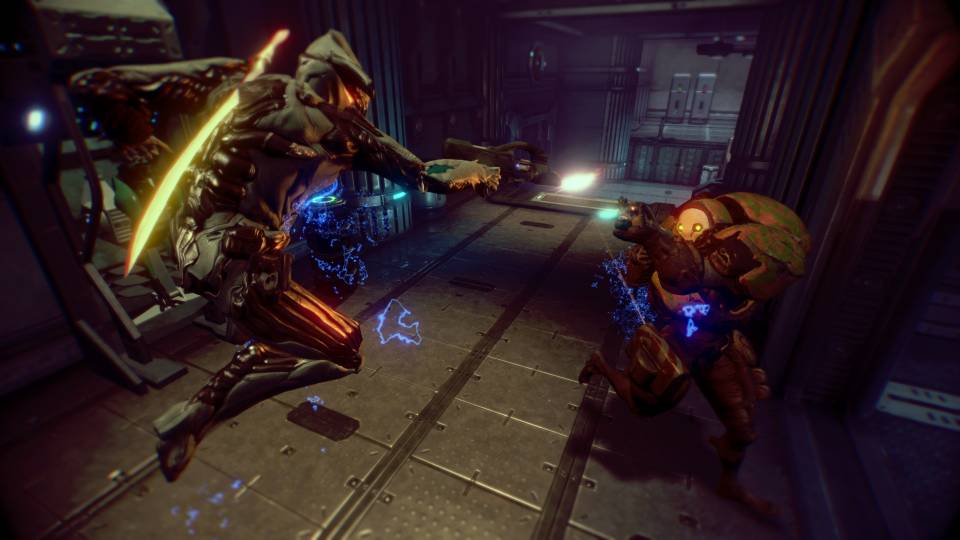
The likeness was intentional, and not because there were graphics files just sitting around the office.
“Without sounding melodramatic, it is a psychic wound that we are healing,” said creative director Steve Sinclair.
“Without sounding melodramatic, it is a psychic wound that we are healing."
Digital Extremes was founded in 1993 by James Schmalz, who was creating his own games at 12-years-old. Epic MegaGames, which would later rename itself Epic Games, published his first major game, the Star Control 2-inspired Solar Winds. Thus began a lengthy, decades-spanning collaboration between Digital Extremes and Epic MegaGames, including Epic’s often forgotten flirtation with pinball games and the studio transformation that occurred when Unreal debuted.
The two companies were attached at the hip for the Unreal Tournament games, including one of the first major online shooters for Xbox Live with Unreal Championship. (It had nothing to do with the stranger, underrated Unreal Championship 2: The Liandri Conflict.) Around this time, the studio hoped to go independent, and create its own franchises. Dark Sector was supposed to be that breakthrough moment, and the game was formally announced on Digital Extreme's website way back in 2000. The full press release is still here, too. The plan called for Dark Sector to be a multiplayer-oriented online shooter, building off Digital Extreme's success with Unreal Tournament, but much larger in scope, with players having the ability to fly ships, earn bounties on their heads, and have lasting consequences for death.
An excerpt from an interview with Canadian gaming website GG8 from 2000:
GG8: A dark universe full of competitive Bounty Hunters and Assassins. When I first read about Dark Sector I had this immediate vision of a universe of players, each with a bounty on their heads, some more then others, and a select few having survived against the odds for so long that they've acquired astronomical bounties. These hunters would be dream targets for every hot shot in the lower ranks looking for a big pay out. Is that the kind of Bounty Hunter system we can expect?
James Schmalz: It will be somewhat like that except that the guys with massive bounties on their heads will still probably get killed and their bounty will reset to 0, but since they have a large track record of previous criminal activity, once they start doing evil deeds, the bounty will ramp up very quickly to where it once was and beyond.
GG8: Successful first-person shooters like Unreal Tournament have found their appeal by reducing itself to a purified form: Hunt or be Hunted. Dark Sector sounds like it will be a strong contrast from that with it's expanding universe of characters, plots, and alternate game modes. Will there be a loss of intensity? Will it matter?
Schmalz: There will be even more intensity because you will fear dying more. In UT, if you die, you respawn and it's no big deal. Dying in DS will have consequences such as having your body looted. Thus it will be more intense. We will also have areas with arena matches where you can challenge someone to a deathmatch or CTF or other new games where you respawn over and over with no lasting consequences. So we get the best of both worlds.
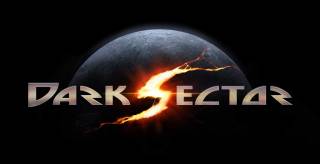
That version of the game was scrapped, and the game went dark for a few years--until April 2, 2004.
We all have humble beginnings, and the next generation of hardware provided a fresh start for Digital Extremes. Its pitch was yet another take on Dark Sector, now a moody and futuristic stealth action game with a stylish protagonist.
“A big single player console game that was super, ultra, hardcore sci-fi, Canadian manga-style,” said Sinclair, “with energy tentacles coming out of people’s heads and giant robots that had organic limbs and Metal Gear Solid-esque stealth suits and telekinesis and crazy, crazy stuff like that, all sort of riffing off of a Dune [and] Metal Gear vibe.”
Developers often keep early work under wraps, but Digital Extremes was going to try something new to make its case. We had seen precious little about what games would be like with an Xbox 360 or PlayStation 3, and Digital Extremes was about to drop a huge tease. Once the video was out there, Digital Extremes would take Dark Sector around to publishers, hoping to ride a wave of early interest.
“We did that purposely to get that buzz going,” said Digital Extremes director of PR and marketing Meredith Braun, “to further convince the publishers that we needed to do this game, and it still didn't work. [laughs] [...] It was our opportunity at the time because it wasn't signed, so that we could actually say something about it without getting our hands slapped.”
There was definitely buzz. Remember, we didn't even know the next Xbox was even going to be called Xbox 360 at this time. The video dropped, and the response was huge. It even showed up on CNN. But as Braun pointed out, it didn’t work. Sinclair was on the road for almost a year pitching Digital Extreme’s vision for Dark Sector, and the resulting feedback was scattered.
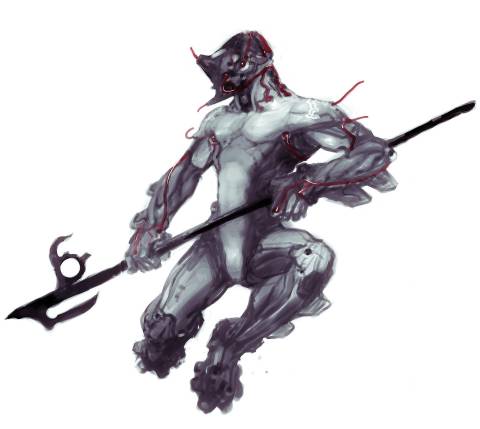
“Can you set in present day?” said Sinclair, who claimed these were more-or-less direct quotes from executives. “Can you give the guy an eye patch? Can you make his cod piece larger?”
Uh, cod piece?
“An executive at a publisher that will remain nameless called out the cod piece, and also suggested that he look more grizzled and that he be torn up and, perhaps, an eye patch and some stubble would help,” he said. “Actually, our art director, who's the same art director on Warframe, Mike Brennan, drew a picture of a guy screaming with large bullet holes in his ears in response to that feedback, which we didn't send. [laughs]”
“I remember pitching to one publisher,” said Sinclair. “God, that guy was such fucking asshole. He said ‘Oh, I've seen better, we got better, we got better in-house. How do you compile your shaders, by the way? How do you store your texture formats?’ It was like this [notion of] ’Yeah I'm not impressed, but tell me how it was made.’ It was bizarre.”
Sinclair distinctly remembered a meeting with Sony. The company thought the game looked cool, but asked the studio if it would consider dropping sci-fi and setting it during the Civil War.
Frustrated, Sinclar returned to Digital Extremes and tried to reshape the pitch, based on what he’s been hearing from publishing executives. Briefly, Dark Sector became about superheroes set in the modern day. It retained some of what Digital Extremes had dreamed up, but not much.
“It was heartbreaking,” said Braun.
“I was in charge, so I had to be a champion, but it was crushing,” he said. “It was fucking devastating. I remember we kept having team jams where I would have a single sheet of paper, and I would hand it around and say ‘here are the top points now of what we think we can get a deal with,’ and I would pass it around and I would move my hands and I would try to drum up support for it.”
The most consistent feedback? Change the setting, as sci-fi was a non-starter. World War II was a popular suggestion, despite the popularity of other sci-fi shooters, like Bungie’s Halo.
“This is not me pointing the blame for what happened or saying that had we done that original vision, it would have turned out great,” he said. “I actually don't think it would have because we created a lot of excitement amongst gamers from what was essentially an animation and some rendering code.”
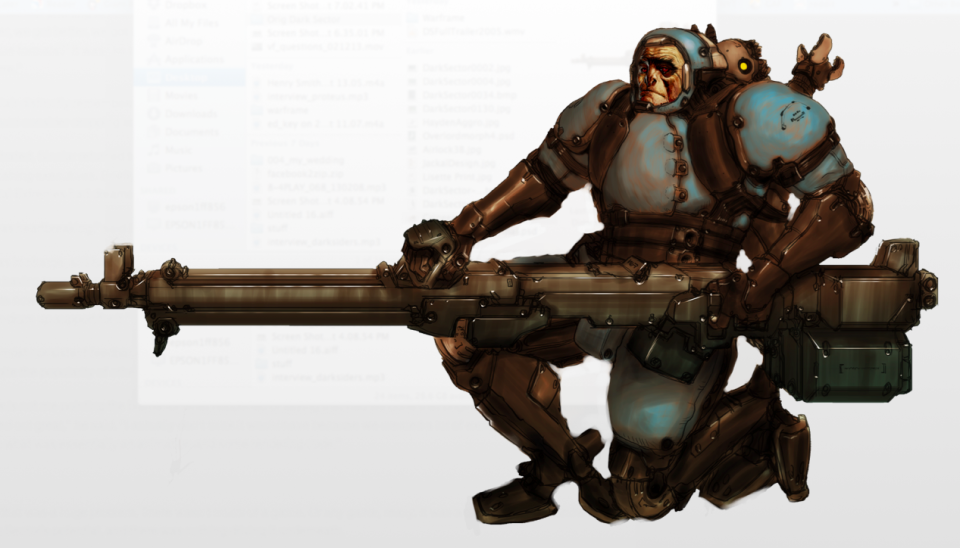
And that was a huge problem. There wasn’t much of a game--or any game, really. It was a canned demo to show off Dark Sector’s potential, and there was literally nothing driving it underneath.
“When it came to solving the tough problems--A.I., animation, collision, physics, performance, scalability, loading, streaming, all this other nonsense--we had no idea what little we had done when we were pitching it,” he said. “The game that became Dark Sector suffered from trying to build new IP, at the same time as building an engine from scratch. That was a monumental effort.”
While it licked its wounds over Dark Sector, Digital Extremes went back to more familiar shooter territory. You might remember 2005’s Pariah and 2006’s Warpath for the Xbox, but...probably not. (And did you know Warpath was once a sequel to Pariah? Okay, probably not.)
Part of the issue was that Dark Sector was to be created with a new engine developed internally--the Evolution Engine--rather than relying on the Unreal Engine, which the company was intimately familiar with. To build a new world, franchise, and engine on new hardware was driven by “hubris and naivety,” and contributed to the less-than-stellar game Dark Sector became when released in 2008.
"Dark Sector feels OK for the first two chapters, but there are eight more to slog through after that, and if I wasn't working on a review of the game, that's probably where I would have stopped," wrote Jeff, in our review of Dark Sector, which he ultimately assigned a middling two stars. "The occasional variety of a boss battle or vehicle sequence doesn't break things up enough to make the campaign an interesting one, either. Between the dreary action, the sluggish movement speed, and the seemingly tacked-on multiplayer, you'll probably want to pass on the whole thing."
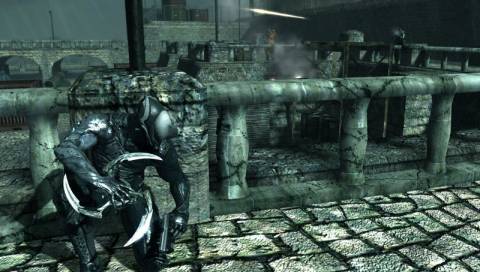
For the next few years, Digital Extremes was low key, and was responsible for bringing BioShock to PS3, handling the multiplayer portion of BioShock 2, and porting Homefront onto PC. Its relationship with 2K Games lead to creating The Darkness II, an unexpected sequel to the celebrated Starbreeze game that turned out much better than most would have anticipated.
The old Dark Sector was not forgotten, though. Over the years, Digital Extremes would return to the hardcore science fiction game the industry had rejected, and tried to find a way to bring it back. Several months were spent, at one point, reimagining it as an Xbox Live Arcade game.
“That is the game that got away, and we keep trying to fucking get it--and now we are,” he said.
The opportunity Digital Extremes had been waiting for arrived in-between projects. As one big game winds down, some resources are shifted to other games still in development (the studio is busy with Star Trek), while others are free to start prototyping The Next Big Thing. Early in 2012, Sinclar and still-CEO James Schmalz were looking at free-to-play games, and wondering if there just might be something to all of it.
As Sinclar gathered his team, the idea to bring 2004's Dark Sector out of retirement came up again. The company's psychic wound became Warframe, a free-to-play online shooter. Members of the team that worked on that original video are still at the company, and involved with Warframe.
The inspiration from Digital Extreme’s 2004 pitch is far more than just aesthetics, too. It’s design.
“It's really, really close,” said Sinclair. “The timeframe, the enemies. [...] It is very much that [ game], but the major difference is it is not a single player, linear, narrative experience. That's the major difference, but in terms of lore, in terms of the enemies, in terms of the abilities, the powers, how the power suits that we call warframes work--that is all from those original ideas.”
“It is the same people whose dreams have been crushed are back, and they got something to prove. So the intensity of effort and how personal the project is for them is unlike anything we've done.”
In Warframe, players are an ancient warrior from a race called the Tenno. The main character in 2008’s Dark Sector was not coincidentally named Hayden Tenno in tribute.
Development on Warframe started in earnest in March 2012, and a closed beta launched in October. It’s still in closed beta, but an open beta is planned for the future. Since our Quick Look was recorded, the game has added several new features, including the ability for players run along walls.
Even in its early state, Warframe has sailed passed the original design document that formed the foundation of Dark Sector in 2004. It’s still very much that game, though, and making sure it’s a success is hugely important to the development team.
“It is the same people whose dreams have been crushed are back, and they got something to prove,” said Sinclair. “So the intensity of effort and how personal the project is for them is unlike anything we've done.”







